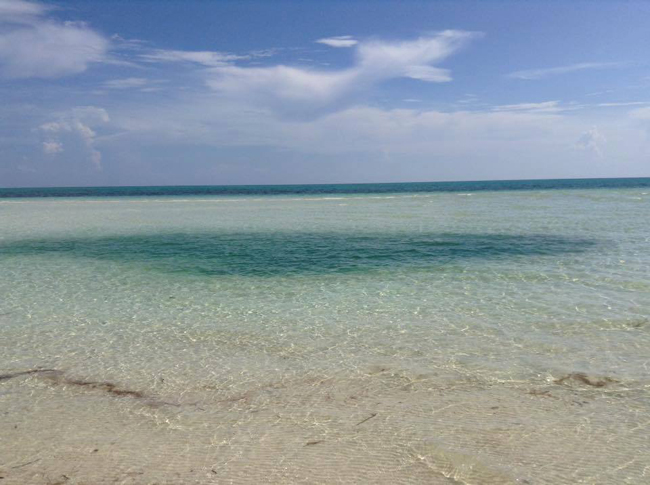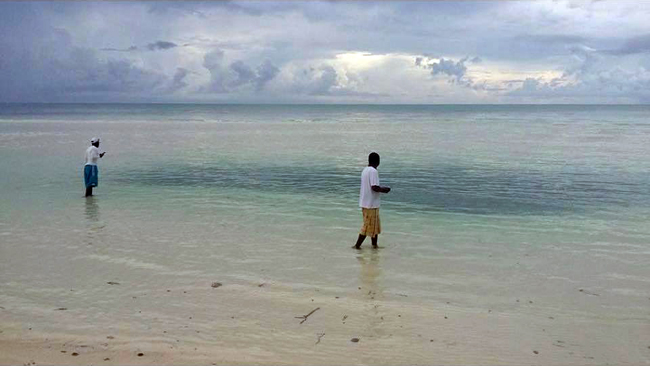
Photo: Samantha Smith
|
An unusual event happened on Monday of this week in the
settlement of Congo Town in South Andros, Bahamas.
About 20 to 25 years ago a Blue Hole located
about a few feet in the water from the beach, simply disappeared and was
covered up by sand. To the surprise of everyone in South Andros, on Monday
it simply reappeared and reopened again.
This baffled many residents in the settlement,
including Samantha Smith who said the last time she remembered this Blue Hole
being opened was when she was a child growing up in the settlement.
For the
entire week, many local residents from Driggs Hill in the north to Mars Bay in
the south came to Congo Town to view this unusual site and the locals are now
calling it “The Miracle Blue Hole.” Why and how this happened, no one knows, but
it sure has the locals talking amongst themselves about this unusual event.
My former Geography College Professor Mr. Neil Sealey’s reasoning for the Re-Opened Blue Hole at Congo Town:
Re-Opened Blue Hole at Congo Town - A Theoretical Explanation
Many blue holes are formed when the roof of a cavern that has been formed underground, and is growing larger, collapses. Often the edges of such a blue hole are irregular and fractured, as many are in South and Central Andros today. They may become rounded as surface erosion continues and trims the edges.
The original Congo Town blue hole may have been formed in this way, and it is not unrealistic to suppose that erosion continued in some form, or that after the initial collapse there were unstable blocks of limestone around the edges. In any event it is possible that a large section of the side of this blue hole collapsed into the hole, but became wedged near the top. Severe weather conditions, such as from a hurricane, could trigger such a collapse, very much in the way sections of a cliff could be detached under similar conditions. As an example, Hurricane Andrew passed through the Bahamas 23 years ago.
As this is a coastal blue hole, once it became blocked the continual movement of sand along the foreshore would fill up the hole until it reached the level of the sea bed. At this point the blue hole would have ‘disappeared’, being no longer visible from the surface. Dean’s blue hole in Long Island is a good example of a blue hole being continually filled with sand, but it is not blocked near the top.
As limestone continues to erode by the dissolution of its calcium carbonate, we might assume that the block of limestone blocking the blue hole would become dislodged, or small enough to fall further down the hole, thus opening the blue hole at the surface. We would then see the blue hole ‘re-appear’.
Inspection by diving into the blue hole may provide some evidence of what actually happened.

Locals fishing near the blue hole. (Photo: Samantha Smith
|
